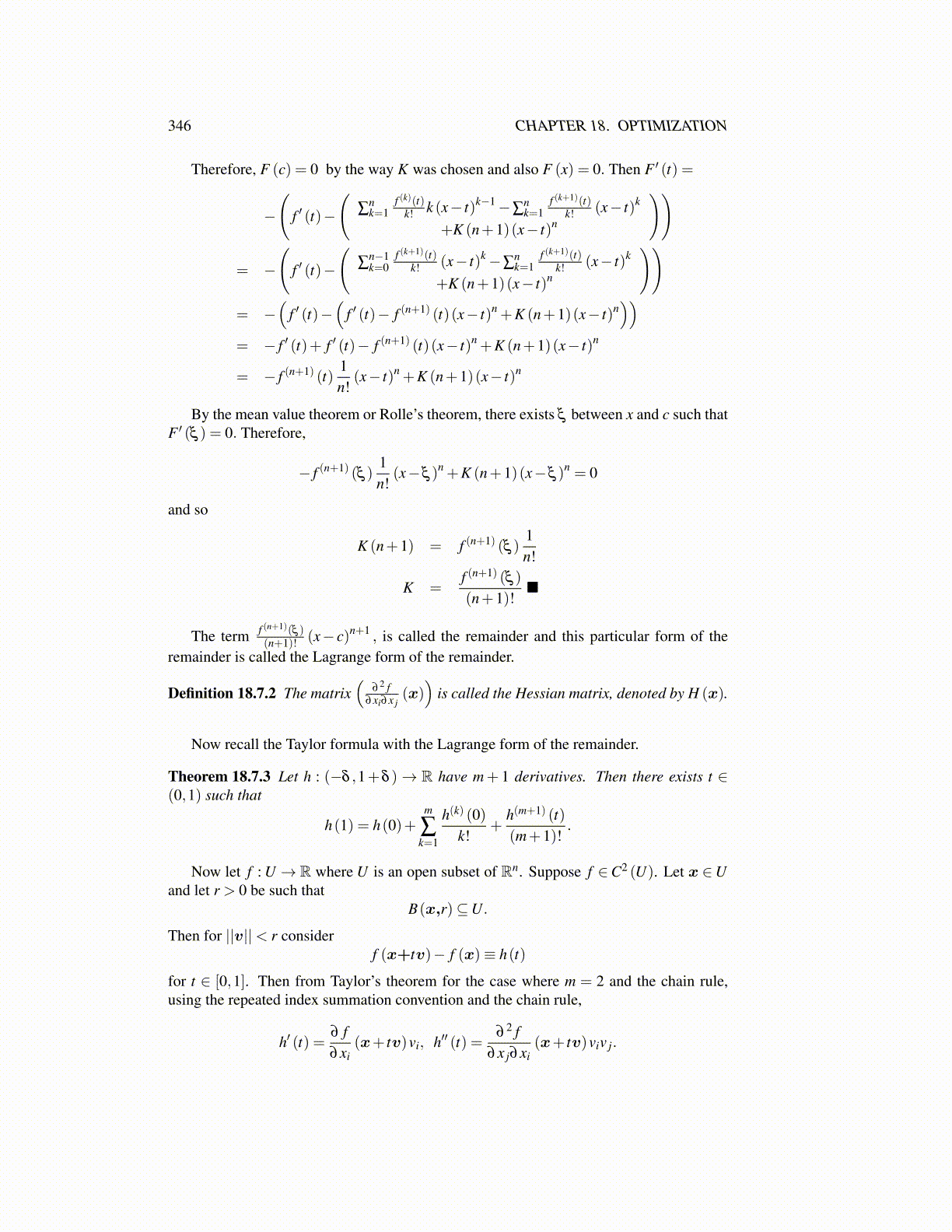
346 CHAPTER 18. OPTIMIZATION
Therefore, F (c) = 0 by the way K was chosen and also F (x) = 0. Then F ′ (t) =
−
(f ′ (t)−
(∑
nk=1
f (k)(t)k! k (x− t)k−1−∑
nk=1
f (k+1)(t)k! (x− t)k
+K (n+1)(x− t)n
))
= −
(f ′ (t)−
(∑
n−1k=0
f (k+1)(t)k! (x− t)k−∑
nk=1
f (k+1)(t)k! (x− t)k
+K (n+1)(x− t)n
))= −
(f ′ (t)−
(f ′ (t)− f (n+1) (t)(x− t)n +K (n+1)(x− t)n
))= − f ′ (t)+ f ′ (t)− f (n+1) (t)(x− t)n +K (n+1)(x− t)n
= − f (n+1) (t)1n!
(x− t)n +K (n+1)(x− t)n
By the mean value theorem or Rolle’s theorem, there exists ξ between x and c such thatF ′ (ξ ) = 0. Therefore,
− f (n+1) (ξ )1n!
(x−ξ )n +K (n+1)(x−ξ )n = 0
and so
K (n+1) = f (n+1) (ξ )1n!
K =f (n+1) (ξ )
(n+1)!■
The term f (n+1)(ξ )(n+1)! (x− c)n+1 , is called the remainder and this particular form of the
remainder is called the Lagrange form of the remainder.
Definition 18.7.2 The matrix(
∂ 2 f∂xi∂x j
(x))
is called the Hessian matrix, denoted by H (x).
Now recall the Taylor formula with the Lagrange form of the remainder.
Theorem 18.7.3 Let h : (−δ ,1+δ )→ R have m+ 1 derivatives. Then there exists t ∈(0,1) such that
h(1) = h(0)+m
∑k=1
h(k) (0)k!
+h(m+1) (t)(m+1)!
.
Now let f : U → R where U is an open subset of Rn. Suppose f ∈C2 (U). Let x ∈Uand let r > 0 be such that
B(x,r)⊆U.
Then for ||v||< r considerf (x+tv)− f (x)≡ h(t)
for t ∈ [0,1]. Then from Taylor’s theorem for the case where m = 2 and the chain rule,using the repeated index summation convention and the chain rule,
h′ (t) =∂ f∂xi
(x+ tv)vi, h′′ (t) =∂ 2 f
∂x j∂xi(x+ tv)viv j.